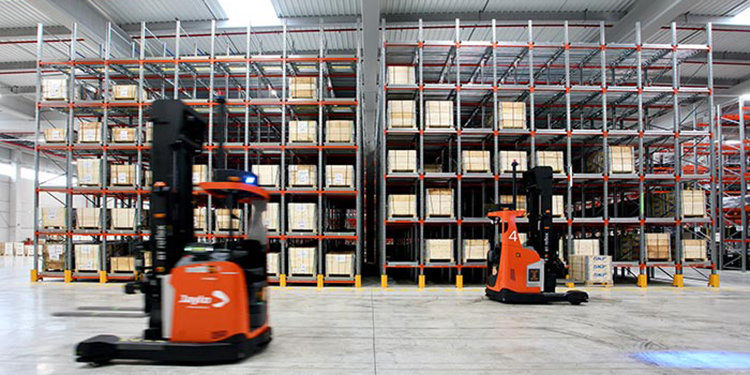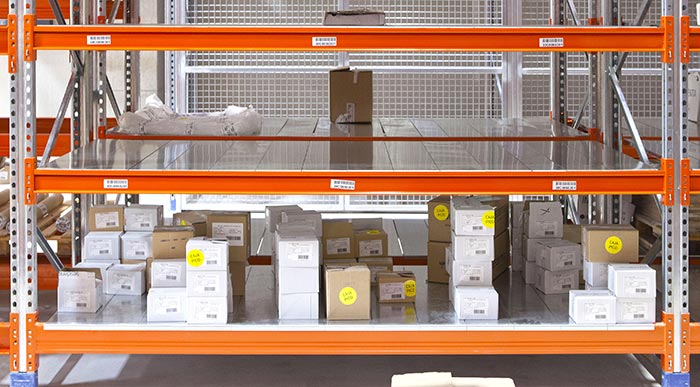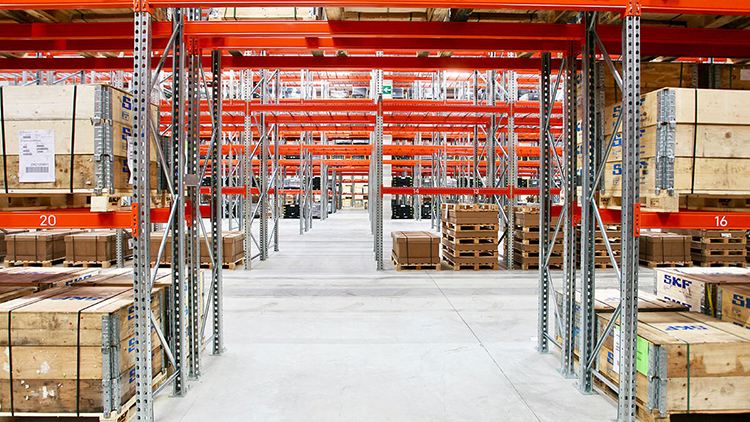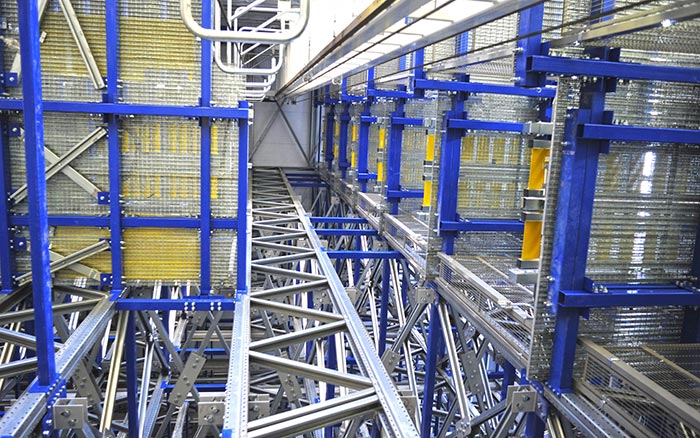Answer These 4 Rack Specification Questions To Source Your Optimal Solution

When planning for a new warehouse or distribution center, there are many factors to consider. Among them are the designated storage areas and different methodologies used to hold inventory. For operations looking to maximize the cube of their building, industrial steel storage racks are an ideal solution. These storage systems come in a variety of styles, with different characteristics to meet a range of needs. To source the optimal solution, it’s important to be able to answer four rack specification questions when working with a manufacturer.
“A qualified industrial rack manufacturer will guide a buyer through a series of rack specification questions. The answers will help them recommend the most appropriate system,” explained Pablo Montes, Managing Director of AR Racking. The company is a member of the Rack Manufacturers Institute (RMI). “While there are often multiple possibilities for storage rack, considering certain criteria will optimize the design process.”
Question # 1: What are the facility’s specifications?
The dimensions of the facility are an important factor when designing a storage rack system. “The height of the warehouse and square footage of its floor should undoubtedly be the first rack specification questions to answer,” said Montes.
A facility with a lower ceiling height of 20 feet or less might be best suited for selective racking. Conversely, one with a 40-foot-high ceiling could enable the installation of an automated storage and retrieval system (AS/RS) served by a stacker crane, he said.
“In small square footage warehouses, it might be more important to achieve high-density storage,” Montes continued. “There are a number of rack systems designed to maximize unit load density, but that don’t enable direct access to goods.”
These include:
Drive-In/Drive-Through Rack – These systems allow highly dense storage of multiple pallets of uniform product. Drive-in rack allows a forklift to enter from one side of the structure to pick up or deliver pallets that rest on continuous rails. Because it eliminates multiple access aisles, drive-in rack can create additional pallet storage positions for a more effective use of a building’s footprint.
Pallet Flow Rack – Also known as Live Pallet or Gravity Flow, these systems are loaded back to front for first-in/first-out (FIFO) load access. The pallets roll over gravity wheel or roller lanes mounted at a slight downward sloping pitch from loading point to pick face.
Pushback Rack – Constructed with a series of nested carts that roll over inclined steel rails, pushback racking typically holds two to six pallets per lane. Loaded front to back, a forklift places each pallet on a cart. Each new pallet pushes back the previously placed load. These systems provide last-in/first-out (LIFO) access.
Pallet Shuttle Systems – Offering high-volume, easy-access to inventory, these semi-automated pallet handling systems increase storage density and throughput. They incorporate rails that pallets rest on; motorized shuttles or carriers travel beneath them. An integrated platform on the device rises to lift the pallet load from underneath, then transports it back to the storage lane.

Question # 2: What are the characteristics of the stored inventory?
Another key series of rack specification questions pertains to the characteristics of the inventory. Unit load dimensions (length, width, and height), weight, and uniformity are critical to determining the most appropriate storage rack type.
“When it comes to size, loads can be small or medium, large or very large,” noted Montes. “If the unit loads are cartons handled manually, the racking that best adapts to that load will likely be long span shelving or carton flow rack systems.”
Alternately, he continued, a rack manufacturer may recommend installing adjustable pallet racking systems with trays or panels to hold and organize individual cartons.
However, for large pallet unit loads, different types of industrial pallet racking options are available. These include selective rack, as well as the types mentioned previously (Drive-In/Drive-Through, Pallet Flow, Pushback, and Pallet Shuttle Systems).
In some applications, a load may be exceptionally long, such as tubes, beams, pipes, or other over-sized materials. Cantilevered racking is most appropriate for storing these types of goods and is frequently used outdoors.
“In short, the type of load being handled is important information to share with a rack manufacturer when configuring a storage solution,” said Montes.
Question # 3: How quickly will stored inventory move?
Another rack specification question to answer is the inventory’s frequency of movement. Different products have different velocities which can impact the choice and installation of industrial racking, Montes noted.
“For example, perishable products or fashion accessories have very fast turnover requirements,” he said. “They need to be dispatched in a short period of time so that they do not spoil or become outdated.”
Some storage systems support faster stock rotation than others. For inventory that must ship before it expires, FIFO pallet rack systems are ideal.
“Pallet Flow rack — which incorporates an incline that allows goods to move forward — accommodates fast stock rotation. It also optimizes storage space,” explained Montes. “The same can be true with compact Drive-Through rack or Pallet Shuttle rack. These types of industrial steel storage racks all ensure that the first product in is also the first one out.”
Notably, he added, fast rotation is not always a facility’s primary objective. Instead, having direct access to goods or greater flexibility to store different product mixes may make selective rack a better choice.

Question # 4: Does the inventory have any special handling requirements?
Although ambient conditions suffice for many goods, certain products require very specific environmental conditions to prevent deterioration. These are often food, beverage, or pharmaceutical products that necessitate refrigerated or freezer space. Therefore, it is important to address any rack specification questions surrounding the inventory’s handling requirements.
In warehouses with cold storage or freezer zones, it is common to deploy storage systems that support uniform temperatures and cold air circulation. Because keeping these spaces cold is costly, these warehouses generally use high density, compact storage solutions to maximize every square foot.
“Mobile racking, Drive-In systems, and Pallet Shuttle racks are common solutions in cold storage environments,” said Montes. “Adjustable pallet rack is also frequently deployed in refrigerated environments, but less so in freezing ones.”
Further, some facilities store hazardous products, including chemicals in liquid or powdered forms. In these cases, it’s important to advise the rack manufacturer of the chemical compounds so they can ensure compatibility with the storage racking. Doing so can reduce the risk of corrosion or rust impacting the rack.
Learn More About Specifying Pallet Rack
Have more rack specification questions? RMI offers the publication, “Considerations for the Planning and Use of Industrial Steel Storage Racks,” to help. Additionally, the members of RMI are available for consultations, insights, and recommendations. For more information, visit mhi.org/rmi.



